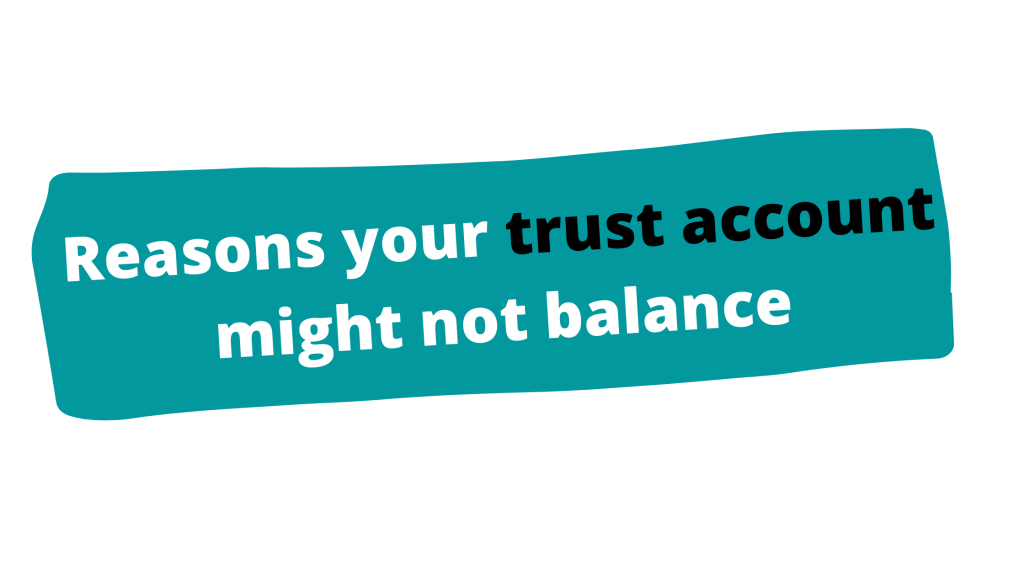
If you’ve been doing trust account reconciliations long enough, the chances are high that you will come across one that just doesn’t work. You think you’ve done everything right – the way you you’ve always done it – but this time lady luck isn’t on your side.
I’ve listed all the reasons your trust account might not balance. Work your way through this list and you’ll be balancing in no time at all.
- Your account closing balance has been entered incorrectly.
- A transaction that’s in your bank statement hasn’t been entered into your trust accounting software in the same month. You overlooked it and therefore it hasn’t been ticked as reconciled – or included in your Adjustments figure.
- You accidentally ticked something as being reconciled in your software, but it isn’t showing in your bank statement for that month.
- The total of your Adjustments figure has not been added up correctly.
- You accidentally ticked something as being reconciled – but the amounts vary slightly. For example, transposed figures can be easily overlooked.
- The previous month’s bank reconciliation didn’t balance.
- Were any cheques cancelled? This can sometimes cause your reconciliation to be out.
- The bank made an error. I’ve seen situations where cheques have been presented for different amounts than they were written out for. I’ve also seen bank statement running balances that were incorrect and also amounts added or subtracted after that day has already passed.
- Software glitches. Very occasionally there can be hiccups with accounting software that results in errors that you won’t be able to fix yourself.
When trust account reconciliations go well, it can be really satisfying. You know that everything lines up nicely and you’re on top of any issues that have happened throughout the month. However when they go wrong, it’s easy to panic. You might not know where to start or what to do after you’ve checked all the obvious places to find those pesky out of balance amounts.
The list above should get you on the road to hassle-free trust account reconciliations in no time.

And if you decide that sorting out trust account reconciliations problems isn’t for you – you can always outsource to a professional.
Happy bookkeeping…
Sarina

About the author.
Sarina Abbott is the owner of Festival Bookkeeping. She’s a registered BAS Agent and Xero adviser who has previously worked in the legal and conveyancing industry, as well as for a registered training organisation. She lives in Adelaide, South Australia with her husband and 2 sons.
You can find out more about Festival Bookkeeping here


